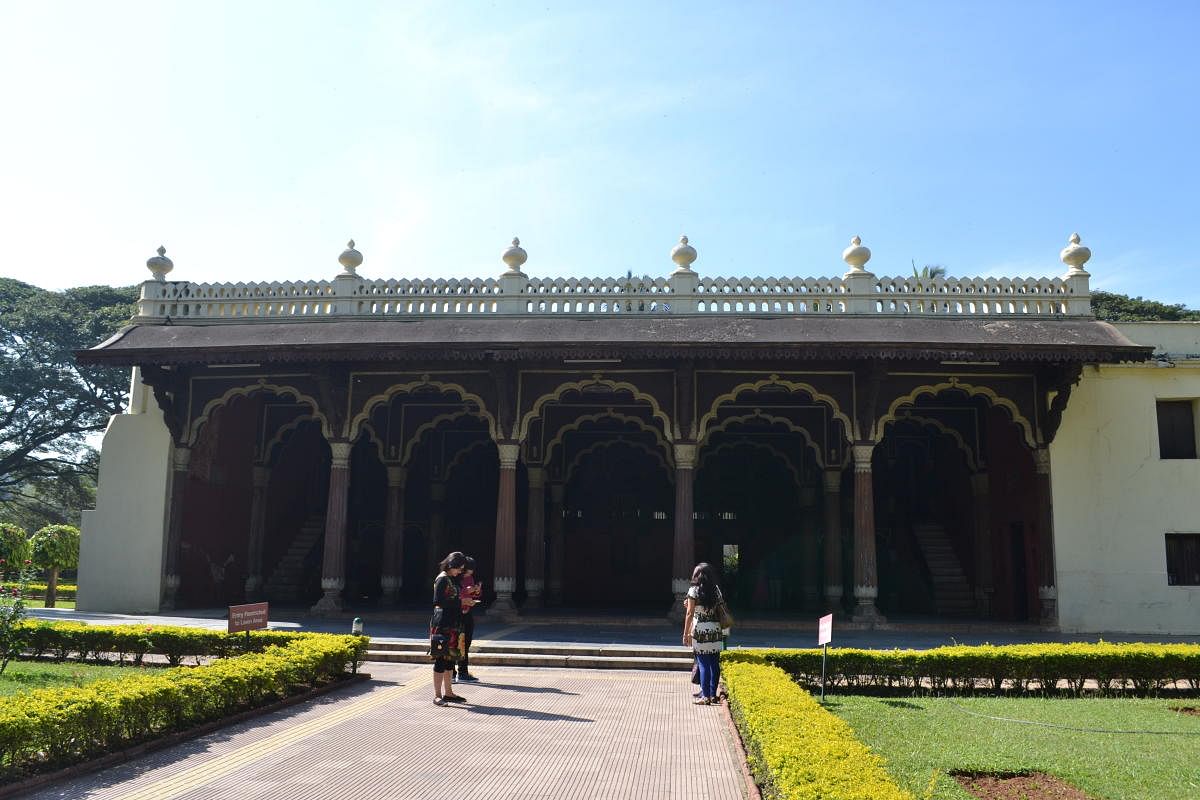
As Bengaluru prepares for Tipu Jayanti celebrations on November 10, a foreigner visits historic places associated with the warrior-king.
Born in 1750, Tipu Sultan reigned over Mysore for nearly 50 years, expanding the princely domain and taking on the British in widely documented battles.
As a newcomer to Bengaluru---and India---I headed out to some of the famous monuments near Chamarajpet in an effort to learn more about the sultan’s legacy.
Summer Palace
My first stop was Tipu Sultan’s Summer Palace, a grand piece of architecture, built from 1781 to 1791 as a retreat for him in the warmer months.
Surrounded by well-maintained gardens, the palace has an eerie calm, in stark contrast with the bustle of the markets and traffic outside the entrance. The palace is not too far from the choc-a-bloc City Market, which supplies flowers and fruits to the entire city.
With striking wooden pillars and arches, the palace preserves a lot of its history, despite the original wall decor being stripped.
The interior also offers artefacts and Archaeological Survey of India plaques about Tipu Sultan and the palace, making it the most informative monument to visit in the area.
It cost me Rs. 300 to visit the palace; it is priced at Rs 15 for Indians and is free for adolescents.
Arriving before 9.30 am, I shared the space with not more than 20 others.
What we saw
* No licensed guides
* Quiet, spic-and-span
* Boards helpful to tourists
* Entry Rs 300 (foreigners), Rs 15 (Indians)
Bengaluru Fort
Further up the road I continued to the remains of the Bengaluru Fort: it adjoins the huge, government-run Victoria Hospital
A stronghold of the sultan before the British army captured it in 1791, what remains of the mud fort today is the ‘Delhi Gate’ and some portions of its bastions.
The fort is free to visit, the grounds are well looked-after, and the mud and brick walls are a sight to behold, particularly under the light of the morning sun.
Unfortunately, there’s little signage in the fort and many spaces are fenced off to the public, so it made for a short visit.
What we saw
* Mostly in ruins
* No conservation
* Info board basic
* Some areas fenced off
* No entry fee
Tawakkal Mastan Dargah
From there, I caught a rickshaw to Dargah Hazrat Tawakkal Mastan in Cottonpete an iconic Sufi shrine.
Believed to be built by Tipu Sultan, the dargah is a sanctum of peace in the middle of the busy K R Market area.
I left my shoes at the door for Rs 10 and draped my head with a scarf, more out of respect than necessity, as I witnessed other women enter without them.
The sultan’s presence play a small role in the dargah. It is more a revered place of worship, with plenty of Muslim and Urdu-speaking people gathering to pray and meditate. Some non-Muslim devotees were around, too.
Yet, for the magnificent architecture and the cultural experience alone, it was worth the visit.
What we saw
* No info boards
* Calm amid the market bustle
* No guides around
* Women allowed entry
* Rs 10 for shoe stand
‘Tiger of Mysuru’
Tipu Sultan (1750-99) was the son of Hyder Ali. He was born in Devanahalli, where Bengaluru now has an international airport. He is hailed as a hero who fought British colonialism and established the Mysuru empire, and is also criticised for his repression of non-Muslims in some areas. He allied with the French in his battles, and ruled from Srirangapatna near Mysuru. He is said to have pioneered rocket missile technology. Tipu was killed on the battlefield in 1799.